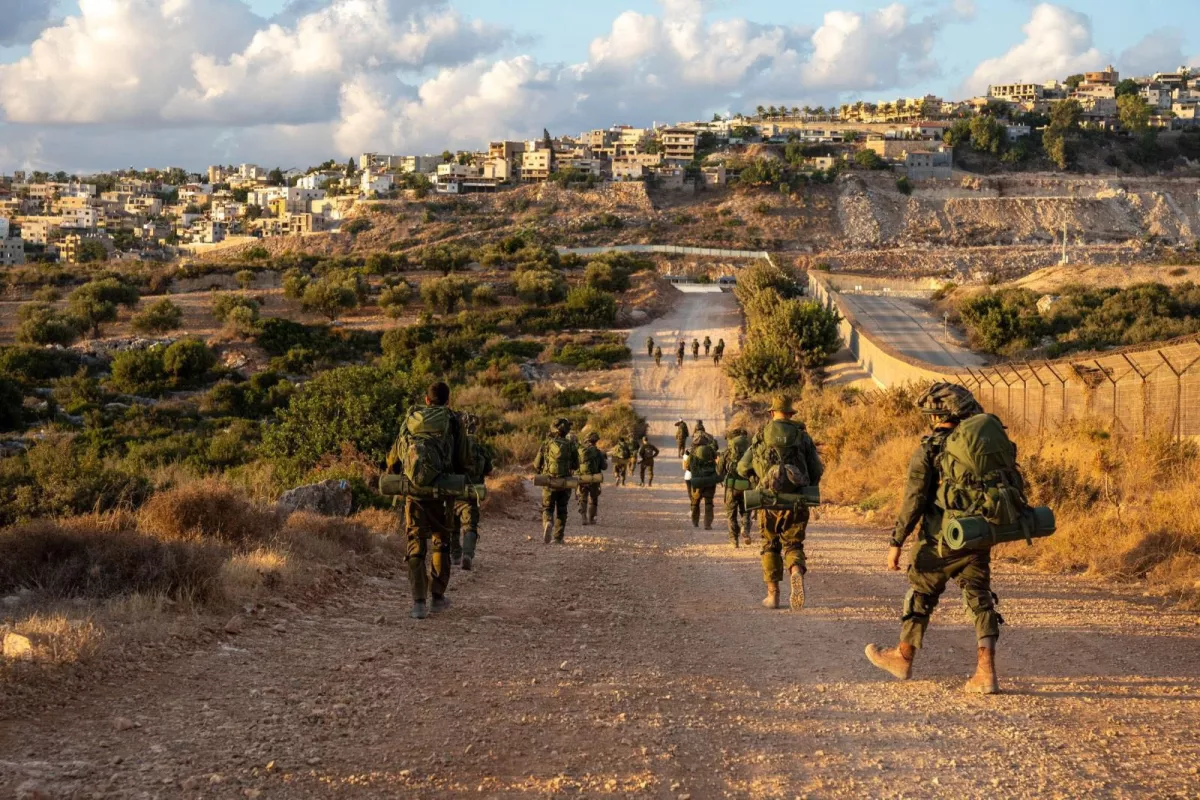Hezbollah's asymmetric warfare Challenges facing the Israeli army
A kamikaze drone launched by Hezbollah struck an Israeli military base, penetrating deep into Israeli territory. The attack resulted in the deaths of four soldiers and left dozens wounded, potentially incapacitating an entire company. Another drone targeted the office of Prime Minister Benjamin Netanyahu; fortunately, no one was injured in that incident.
These increasingly lethal drone attacks are becoming more frequent. Hezbollah is not solely relying on drones; they are also employing other types of precision weaponry. The Israeli Defense Forces (IDF) have experienced particularly heavy losses from operators using Iranian-made ALMAS anti-tank guided missiles (ATGMs). Footage of these strikes, which target concentrations of enemy personnel and equipment, is circulating widely on the internet.
According to military experts, the missiles in question are equipped with a thermal and television guidance system using fibre-optic cables. These experts describe this anti-tank missile system as an "Iranian copy of the Israeli Spike ATGM." It can effectively target armoured vehicles and enemy personnel from several kilometres away, beyond direct line of sight—these missiles are capable of manoeuvring around hills. In multiple instances, ALMAS missiles have been successfully deployed against Israeli tanks.
After the assassination of Hassan Nasrallah, the Secretary-General of Hezbollah, along with nearly all of the group's military leadership, a sense of euphoria swept through Israel. Prime Minister Benjamin Netanyahu's approval ratings surged. However, Reuters recently reported that the organization's military leadership has been reestablished, though there is no doubt that the party, which boasts the most powerful armed forces in Lebanon, has sustained significant losses. The management of its military structure is largely disorganized.
Nevertheless, Israeli forces entering Lebanon are suffering significant losses due to attacks from Hezbollah. Elite units of the Israel Defense Forces (IDF) are falling into traps and ambushes. They are targeted by anti-tank guided missiles (ATGMs), and their withdrawal routes come under mortar fire.
So far, the IDF has managed to capture only a few villages in Southern Lebanon. A likely objective for Prime Minister Benjamin Netanyahu is to push Hezbollah back 10 kilometres from the Israeli border, beyond the Litani River, which could reduce the threat to residents of northern Israeli settlements. However, this task has proven to be quite challenging. Even if Israel succeeds, its forces in Southern Lebanon would become targets for guerrilla warfare. This scenario already occurred during the First Lebanon-Israel War from 1982 to 2000: after prolonged and unsuccessful attempts to combat Hezbollah's guerrillas, the IDF ultimately withdrew from Lebanon, suffering considerable losses.
Disabling the leadership of a group is one thing, but defeating it on the ground is quite another. The fact is that Hezbollah fighters are experts in asymmetric warfare. They employ three main strategies.
First, they engage in guerrilla tactics characterized by numerous ambushes.
Second, Hezbollah utilizes underground tunnels to evade Israeli attacks (similar to the tactics used by Hamas in the Gaza Strip).
Third, they deploy rocket systems to launch strikes against Israeli territory.

A troubling reality for the Israel Defense Forces (IDF) is that Hezbollah units are trained to operate autonomously and can coordinate their combat operations horizontally with other units—even without central command, as demonstrated during the Second Lebanon War in 2006. This capability, combined with terrain ideal for guerrilla warfare (hilly areas covered in forests and narrow roads in some places), can lead to severe consequences for Israeli forces from ambushes and attacks.
Thus far, all wars in Lebanon have ended unfavourably for Israel. The Second Lebanon War, in particular, was officially recognized as a failure by a state commission led by Eliyahu Winograd. The publication of this investigation contributed to the resignation of Prime Minister Ehud Olmert.
Another alarming indicator is that Israel has been unable to defeat Hamas, which has been fighting in isolation in the Gaza Strip for a year. This reality was acknowledged by senior military officials of the Israel Defense Forces (IDF), who told the American publication The New York Times this summer that further military operations in Gaza are futile. The Israeli army has struggled to dismantle the tunnel network where militants take refuge, while others blend in with the civilian population. When Israeli forces withdraw, Hamas quickly reestablishes control over various areas of Gaza.
Hezbollah has a similar tunnel system and is deeply embedded within the Shia community in Lebanon (despite not holding a majority there), and there is no reason to believe they wouldn't employ the same tactics.
Moreover, Hezbollah is stronger and not fighting in isolation; it receives support from Iran and its proxies in the "Axis of Resistance."
However, there are drawbacks. Some reports indicate that Hezbollah's morale has significantly declined following the deaths of its leaders. The intensive bombings carried out by Israel have also taken their toll, with many weapons depots and command centres of the group destroyed. Not all fighters exhibit high motivation; among Hezbollah's ranks are a number of mercenaries from various ethnic and religious communities in Lebanon.
Nevertheless, Hezbollah's asymmetric tactics against Israel's superior military power have proven effective so far. Hezbollah is a relatively small, well-trained guerrilla army (with 20,000 to 30,000 active fighters and a similar number in reserve). Its goal is to wear down and bleed the IDF through countless painful strikes, ultimately forcing them to withdraw from Lebanon. Some of its fighters are religious extremists, while others are residents of the very areas where the IDF operates. They know every path in their hometowns and view their mission as a defence of their communities.
Additionally, it seems that another factor is at play: Hezbollah's use of advanced precision weaponry, drones, and new anti-tank systems.








